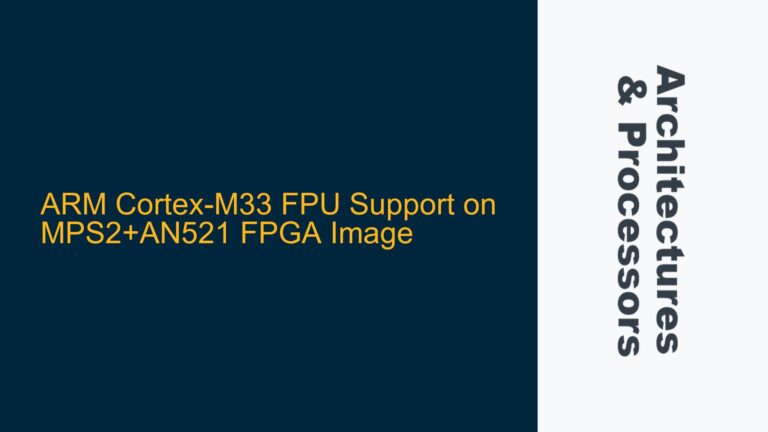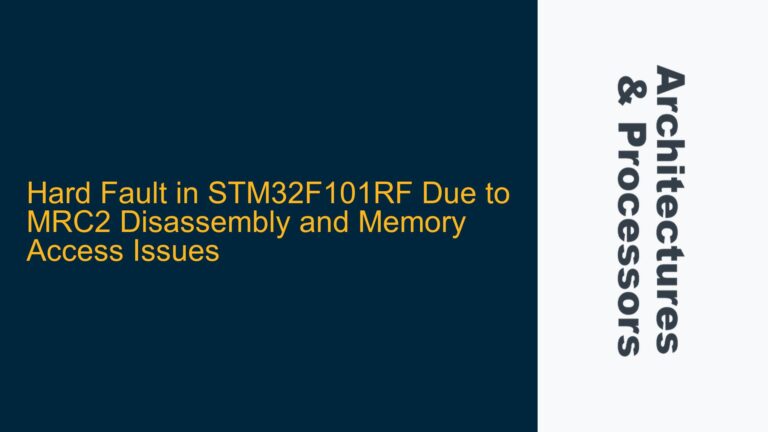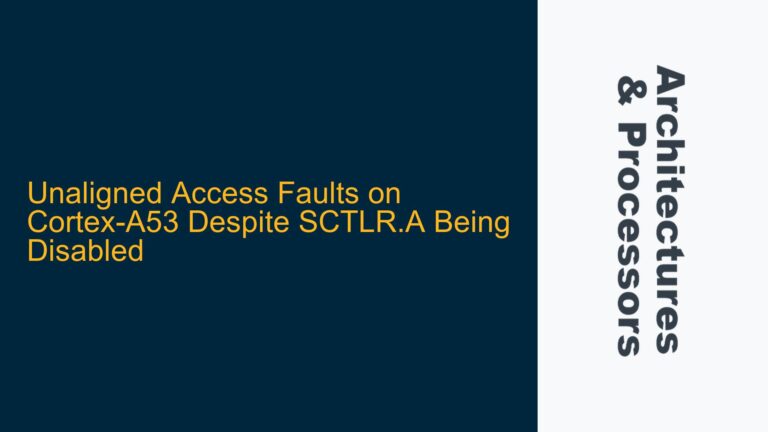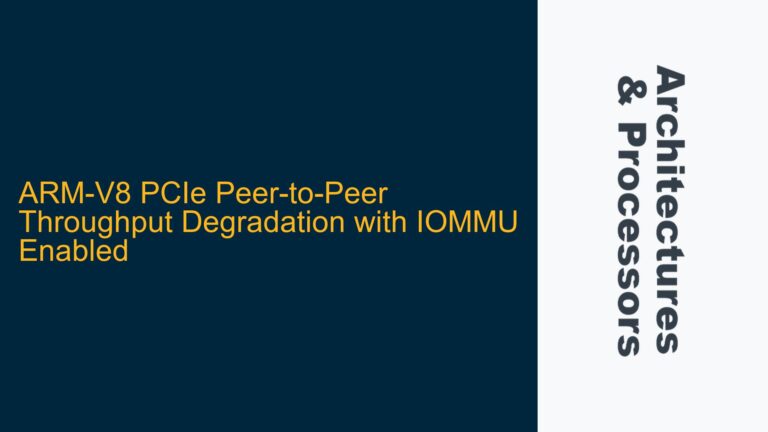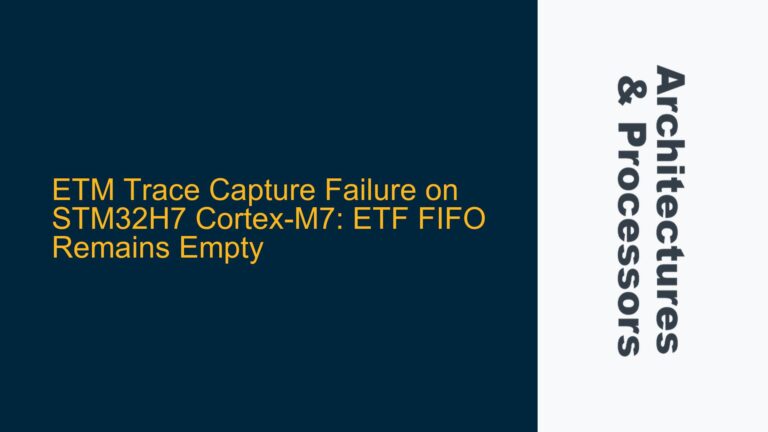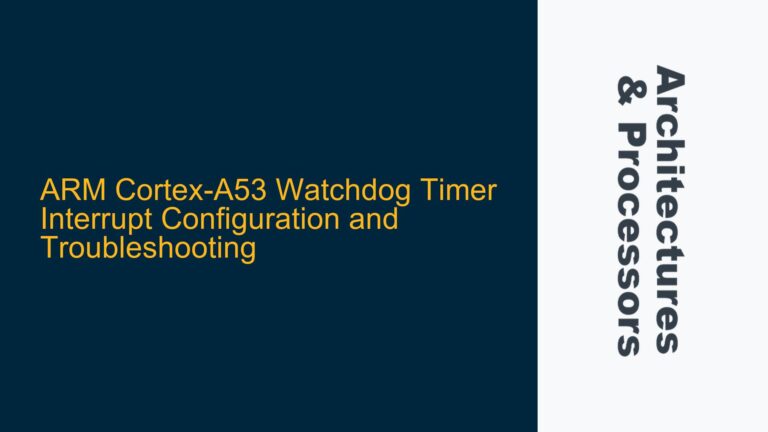ICH_EISR_EL2 Register and Its Role in Handling Multiple EOIs
The ICH_EISR_EL2 (Interrupt Controller Hyp End of Interrupt Status Register) is a critical component in the ARM Generic Interrupt Controller (GIC) architecture, specifically within the GICv3 virtualization extensions. This register is designed to report the status of End of Interrupt (EOI) operations for virtual interrupts handled by the hypervisor. Each bit in the 16-bit ICH_EISR_EL2 corresponds to a List Register (LR) in the GICv3 architecture, indicating whether an EOI has been issued for the corresponding virtual interrupt.
The primary function of ICH_EISR_EL2 is to signal to the hypervisor that one or more virtual interrupts have been completed by the guest operating system. This is particularly important in virtualized environments where the hypervisor must manage interrupts for multiple guest operating systems. The hypervisor uses this register to determine when it needs to perform maintenance operations, such as cleaning up the state of virtual interrupts or re-enabling interrupts that were previously disabled.
However, the behavior of ICH_EISR_EL2 becomes more complex when multiple EOIs are issued in rapid succession. The register is designed to handle multiple outstanding EOIs, but the conditions under which this occurs are not immediately obvious. This complexity arises from the interplay between the GICv3 hardware, the hypervisor, and the guest operating system, particularly in scenarios where virtual interrupts are being handled concurrently or with minimal delay between operations.
Hardware Implementation and Timing Constraints in Multi-EOI Scenarios
The hardware implementation of ICH_EISR_EL2 plays a significant role in its behavior. Each bit in the register is typically updated through combinational logic that evaluates the state of the corresponding List Register (LR). Specifically, a bit in ICH_EISR_EL2 is set to 1 if the following conditions are met for the corresponding LR: the LR is in the Inactive state (LR.Inactive is true), the interrupt is not a hardware interrupt (LR.HW is false), and the EOI bit is set (LR.EOI is true). This combinational logic ensures that the ICH_EISR_EL2 register is updated almost immediately when an EOI is issued.
However, the timing of these updates can be influenced by several factors. One critical factor is the delay between the issuance of an EOI and the subsequent handling of the next interrupt. If this delay is sufficiently small, it is possible for multiple EOIs to be issued before the hypervisor has a chance to process the maintenance interrupt. This can result in multiple bits being set in ICH_EISR_EL2, indicating that more than one virtual interrupt has been completed.
Another factor is the propagation delay of ICV_EOI and ICV_DIR signals within the GICv3 hardware. These signals are responsible for updating the state of the List Registers and, consequently, the ICH_EISR_EL2 register. If the propagation delay is longer than the time it takes to handle the next interrupt, it is possible for multiple EOIs to be outstanding simultaneously. This scenario is more likely to occur in high-performance systems where interrupts are handled with minimal latency.
Additionally, the hypervisor may impose a timeout on the generation of maintenance interrupts. This timeout allows the virtual CPU (vCPU) to handle multiple virtual interrupts before the hypervisor intervenes. If the timeout is sufficiently long, it is possible for the vCPU to complete multiple EOIs before the maintenance interrupt is generated, resulting in multiple bits being set in ICH_EISR_EL2.
Practical Experiments and Observations on Multi-EOI Behavior
To better understand the behavior of ICH_EISR_EL2 in multi-EOI scenarios, practical experiments can be conducted. These experiments involve manipulating the timing of interrupt handling and observing the resulting state of the ICH_EISR_EL2 register. One such experiment involves introducing a small delay between the handling of consecutive interrupts. This delay can be adjusted to determine the threshold at which multiple EOIs are reported in ICH_EISR_EL2.
In one experiment, a loop is used to continuously read the Interrupt Acknowledge Register (IAR) and issue EOIs for non-spurious interrupts. A small delay is introduced between the handling of each interrupt. When the delay is sufficiently small, it is observed that multiple bits are set in ICH_EISR_EL2 before the maintenance interrupt is generated. This indicates that the vCPU is able to handle multiple interrupts within the timeout period, resulting in multiple outstanding EOIs.
Another experiment involves separating the priority drop and deactivation operations for virtual interrupts. In this scenario, multiple List Registers are injected with virtual interrupts, each with the EOI bit set to 1. The vCPU then handles these interrupts using the IAR and EOIR registers, followed by sequential deactivations using the ICC_DIR_EL1 register. In this case, it is observed that multiple bits in ICH_EISR_EL2 are set when the maintenance interrupt is generated, indicating that multiple EOIs have been issued.
These experiments demonstrate that the behavior of ICH_EISR_EL2 is influenced by both the timing of interrupt handling and the specific operations performed by the vCPU. By carefully controlling these factors, it is possible to create scenarios where multiple EOIs are reported in ICH_EISR_EL2, providing valuable insights into the operation of the GICv3 architecture in virtualized environments.
Debugging and Optimizing Multi-EOI Scenarios in ARM GICv3
When dealing with multi-EOI scenarios in ARM GICv3, it is essential to adopt a systematic approach to debugging and optimization. The first step is to carefully analyze the timing of interrupt handling operations, particularly the delay between consecutive EOIs. This can be achieved by instrumenting the interrupt handling code to measure the time taken for each operation. By identifying the points at which delays occur, it is possible to adjust the timing to ensure that multiple EOIs are handled correctly.
Another important consideration is the configuration of the hypervisor’s maintenance interrupt timeout. This timeout determines how long the vCPU is allowed to handle interrupts before the hypervisor intervenes. If the timeout is too short, it may not be possible for the vCPU to handle multiple interrupts within the allotted time. Conversely, if the timeout is too long, it may result in excessive latency for interrupt handling. By carefully tuning this timeout, it is possible to achieve a balance between performance and responsiveness.
In addition to timing considerations, it is also important to ensure that the GICv3 hardware is configured correctly. This includes verifying that the List Registers are properly initialized and that the ICV_EOI and ICV_DIR signals are propagating correctly. Any discrepancies in the hardware configuration can lead to unexpected behavior in the ICH_EISR_EL2 register, making it difficult to diagnose and resolve issues.
Finally, it is essential to consider the impact of software optimizations on multi-EOI scenarios. For example, optimizing the interrupt handling code to minimize the time taken for each operation can help to reduce the likelihood of multiple EOIs being issued. Similarly, using techniques such as batch processing of interrupts can help to improve the efficiency of interrupt handling, reducing the overall load on the vCPU and the hypervisor.
By following these steps, it is possible to effectively debug and optimize multi-EOI scenarios in ARM GICv3, ensuring that the system operates efficiently and reliably in virtualized environments. This requires a deep understanding of the GICv3 architecture, as well as careful attention to the timing and configuration of interrupt handling operations. With the right approach, it is possible to achieve optimal performance and responsiveness, even in complex multi-EOI scenarios.

